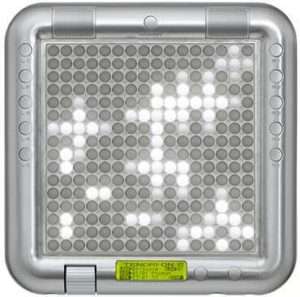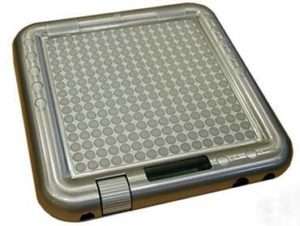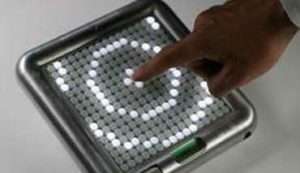
History of tenori-on
Contents
Tenori-on – an electronic musical instrument. The word tenori-on is translated from Japanese as “sound in the palm of your hand.”
The history of the invention of the tenori-on
Japanese artist and engineer Toshio Iwai and Yu Nishibori, from Yamaha’s Music Technology Development Center, demonstrated the new instrument to the general public for the first time at SIGGRAPH in Los Angeles in 2005. In 2006, a presentation was held in Paris, where everyone could get acquainted with the innovation in detail.  In July 2006, at the Futuresonic concert, the tenori-on made a favorable impression on those present, the audience greeted the new instrument with undisguised admiration. This was the starting point for the production of a new musical instrument for the mass consumer.
In July 2006, at the Futuresonic concert, the tenori-on made a favorable impression on those present, the audience greeted the new instrument with undisguised admiration. This was the starting point for the production of a new musical instrument for the mass consumer.
In 2007, the first sales started in London, the first instrument was sold for $1200. To promote and distribute the tenori-on, well-known musicians experimenting with electronic music were involved to record demo tracks for advertising purposes. Now these compositions can be found on the official website of the instrument.
Presentation of the musical instrument of the future
The appearance of the tenori-on is similar to a console video game: a tablet with a screen, bright lights running around. The device allows you to enter and display information. The appearance has not changed much since the invention, now it is a square display, which includes 256 touch buttons with LEDs inside.
Using the device, you can get a polyphonic sound effect. To do this, you need to enter notes for 16 sound “pictures”, then superimpose them one on top of the other. The device makes it possible to receive the timbres of 253 sounds, 14 of which are responsible for the drum section.  The screen has a grid of 16 x 16 LED switches, each activated in a different way, creating a musical composition. At the top edge of the magnesium case are two built-in speakers. The pitch of the sound and the number of beats made in a period of time are controlled by the top buttons of the device. In addition, on the right and left side of the case there are two columns of five keys – function buttons. By pressing each, the layers necessary for the musician are activated. The top center button resets all active functions. There is an LCD display required for more advanced settings.
The screen has a grid of 16 x 16 LED switches, each activated in a different way, creating a musical composition. At the top edge of the magnesium case are two built-in speakers. The pitch of the sound and the number of beats made in a period of time are controlled by the top buttons of the device. In addition, on the right and left side of the case there are two columns of five keys – function buttons. By pressing each, the layers necessary for the musician are activated. The top center button resets all active functions. There is an LCD display required for more advanced settings.
Principle of operation
Use the horizontal keys to select layers. For example, the first one is selected, sounds are selected, looped, begin to repeat continuously.  The composition is saturated, it becomes richer. And in the same way, layer by layer is worked out, the result is a piece of music.
The composition is saturated, it becomes richer. And in the same way, layer by layer is worked out, the result is a piece of music.
The device is equipped with a communication function, which makes it possible to exchange musical compositions between different similar instruments. The peculiarity of the tenor-on is that sound is visualized in it, it becomes visible. The keys after pressing are highlighted and flash, that is, an analogue of animation is obtained.
The developers emphasize that tenori is extremely easy to use. The interface of the tool is clear and intuitive. An ordinary person, only by pressing buttons, will be able to play music and compose compositions.





